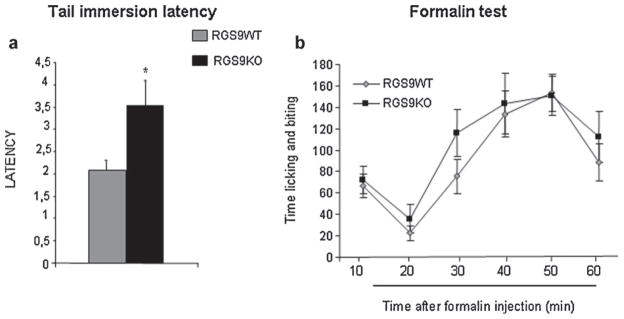Fig. 1.
RGS9-2 modulates nociceptive thresholds in the hot water tail immersion assay. The tail withdrawal latency values in the 54 °C tail immersion test were significantly higher in RGS9KO mice compared to their RGS9WT littermates (a), suggesting that RGS9-2 plays an essential role in the modulation of spinal nociceptive transmission. Data are presented as mean ± SEM, n = 8 per group, Student’s t-test, *P < 0.05. (b) Shows responses of RGS9WT and RGS9KO mice in the formalin test. Licking and biting behaviour of animals injected with formalin in the plantar surface of the left hindpaw were recorded for 60 min at 10 min intervals. Data are presented as mean ± SEM, n = 12–13 per group.

